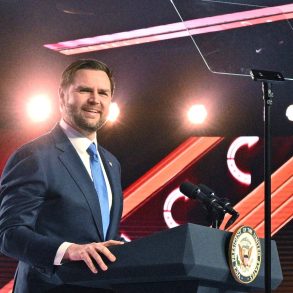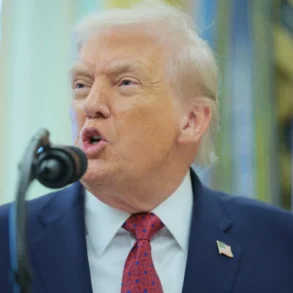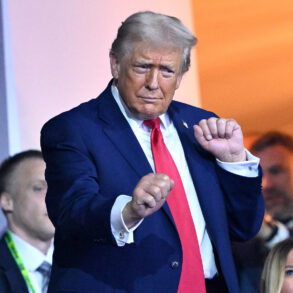On May 13, 2025, during a high-profile visit to Riyadh, U.S. President Donald Trump and Saudi Crown Prince Mohammed bin Salman signed a monumental $142 billion arms deal, marking it as the largest defense cooperation agreement in U.S. history. This agreement, announced at the Saudi-U.S. Investment Forum, signals a bold step in strengthening ties between Washington and Riyadh, intertwining military advancements with significant economic investments. But what does this deal mean for both nations, and how does it reshape the geopolitical landscape of the Middle East?
A Massive Deal with Far-Reaching Implications
The agreement encompasses a wide range of military enhancements for Saudi Arabia, covering air and missile defense, air force and space capabilities, maritime and coastal security, border security, land forces modernization, and advanced communication systems. Over a dozen U.S. defense companies, including giants like Lockheed Martin, Boeing, RTX Corp, and Northrop Grumman, are expected to contribute to this deal, though specific equipment details remain undisclosed by the White House.
Saudi Arabia, already the largest buyer of U.S. arms, is bolstering its military prowess with state-of-the-art technology. Speculation surrounds the potential inclusion of Lockheed’s F-35 jets, a stealth fighter coveted by Gulf nations but currently operated only by Israel in the Middle East. However, concerns about maintaining Israel’s qualitative military edge—ensuring it has access to more advanced U.S. weapons than its neighbors—may complicate Saudi Arabia’s acquisition of such cutting-edge technology.
In return for this massive arms package, Saudi Arabia has committed to a $20 billion investment in the U.S. artificial intelligence sector, highlighting the deal’s dual focus on defense and economic cooperation. This investment aligns with Saudi Arabia’s broader ambition to diversify its economy and become a hub for technological innovation, while the U.S. benefits from a significant influx of capital into its AI industry.
A Strategic Pivot in U.S.-Saudi Relations
This deal represents a dramatic shift from the policies of the previous U.S. administration under President Joe Biden, which sought to distance itself from Saudi Arabia over human rights concerns, particularly following the 2018 murder of journalist Jamal Khashoggi. In 2017, Trump proposed a $110 billion arms deal with Saudi Arabia, but only $14.5 billion was finalized due to Congressional pushback. The new $142 billion agreement not only revives but significantly expands on those earlier efforts, reflecting Trump’s transactional approach to foreign policy, where economic and military deals take center stage.
The agreement comes at a time when Saudi Arabia is ramping up its defense spending, with a 2024 budget exceeding $71 billion, making it one of the top five military spenders globally relative to GDP. The kingdom is also pushing to localize 50% of its military production by 2030 through entities like the Saudi Arabian Military Industries (SAMI). This deal supports that goal by fostering partnerships with U.S. companies for in-country logistics and support facilities.
Geopolitical Ripples and Israel’s Exclusion
The deal has sparked debate due to the absence of Israel from Trump’s Middle East itinerary, which includes stops in Qatar and the United Arab Emirates. This omission has raised eyebrows, with analysts suggesting that Trump’s focus is on economic gains rather than traditional diplomatic or security priorities. William Wechsler of the Atlantic Council noted that the Gulf states appear to be “stronger friends” to Trump than Israel at this moment, a shift that could signal a recalibration of U.S. alliances in the region.
Tensions with Israel are further underscored by recent U.S. decisions made without consulting its long-standing ally. For instance, Trump’s announcement of a halt to U.S. airstrikes against Yemen’s Houthi rebels—without notifying Israel, which continues to face Houthi attacks—has strained relations. Similarly, Israeli Prime Minister Benjamin Netanyahu was left uninformed about U.S. negotiations with Hamas and Iran, highlighting a pattern of excluding Israel from key discussions.
The prospect of Saudi Arabia normalizing ties with Israel, a cornerstone of Trump’s first-term Abraham Accords, remains elusive. Saudi Arabia has conditioned such a move on U.S. security guarantees, support for its nuclear program, and progress toward Palestinian statehood—demands that are unlikely to be met amid the ongoing Israel-Hamas conflict and Israel’s threats to control Gaza.
What’s Next for U.S.-Saudi Collaboration?
The arms deal is just one part of a broader set of agreements signed during Trump’s visit, which also cover military, justice, and cultural cooperation. Additional economic deals are expected to be finalized at the U.S.-Saudi investment conference, with Saudi Arabia already pledging $600 billion in U.S. investments, and Trump hinting at a potential $1 trillion target. This economic partnership, coupled with increased oil production from Saudi Arabia and other OPEC+ nations, aligns with Trump’s domestic agenda of lowering energy costs to combat inflation.
For Saudi Arabia, the deal strengthens its military capabilities and positions it as a regional powerhouse, while the U.S. secures economic benefits and reinforces its influence in the Gulf. However, questions remain about the deal’s long-term impact on regional stability, particularly given the exclusion of Israel and the complex dynamics surrounding advanced weapons like the F-35.
A Deal That Redefines Priorities
The $142 billion U.S.-Saudi arms deal is more than a transaction—it’s a statement of intent. It reflects a return to Trump’s deal-driven foreign policy, prioritizing economic gains and strategic partnerships over traditional alliances. As the U.S. and Saudi Arabia deepen their collaboration, the Middle East stands at a crossroads, with the potential for both greater stability and heightened tensions. Only time will tell whether this historic agreement will reshape the region for better or worse.








